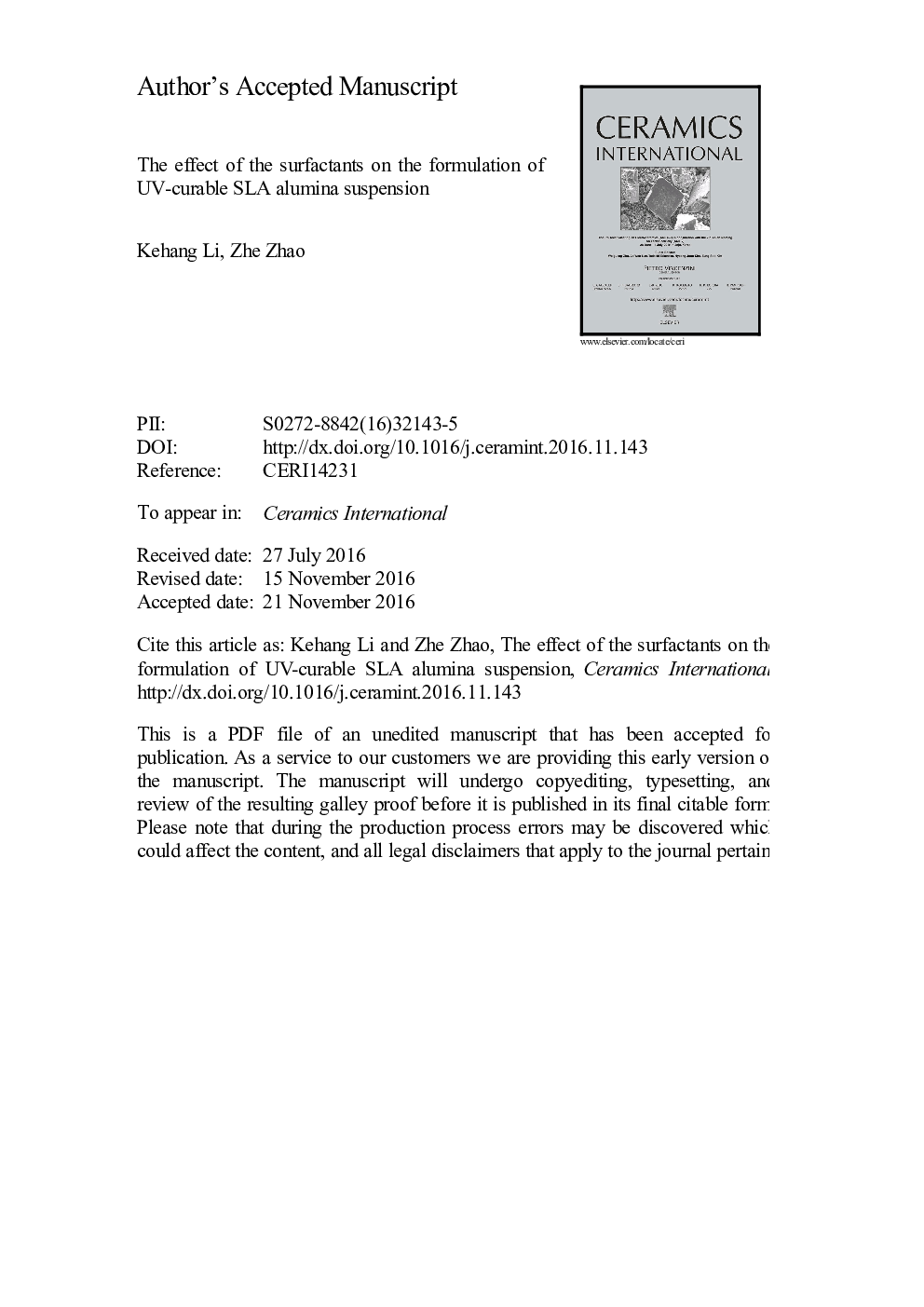| Article ID | Journal | Published Year | Pages | File Type |
|---|---|---|---|---|
| 5438599 | Ceramics International | 2017 | 27 Pages |
Abstract
Stereolithography (SLA) has been regarded as the most promising rapid prototype (RP) production method for ceramic parts recently because of its better precision in size and site control. The rheological behavior and curing behavior of suspensions are controlling factors for ceramic stereolithography. In this work, oleic acid (OA), stearic acid (SA) and Poly(Acrylate Ammonium) (PAA-NH4) were studied as the surfactant for HDDA-based suspension formulation. Modified alumina particles exhibit different wettability with HDDA monomer and thus the different rheology behavior and stability between the formulated suspensions. OA shows the best performance among all three dispersants. 40 vol% alumina suspensions with a viscosity Ë3 Pa s at 30 sâ1 shear rate were successfully formulated with OA and SA. A sintering density of 95% can be reached for the OA- and SA-modified alumina UV-curable resins.
Related Topics
Physical Sciences and Engineering
Materials Science
Ceramics and Composites
Authors
Kehang Li, Zhe Zhao,
